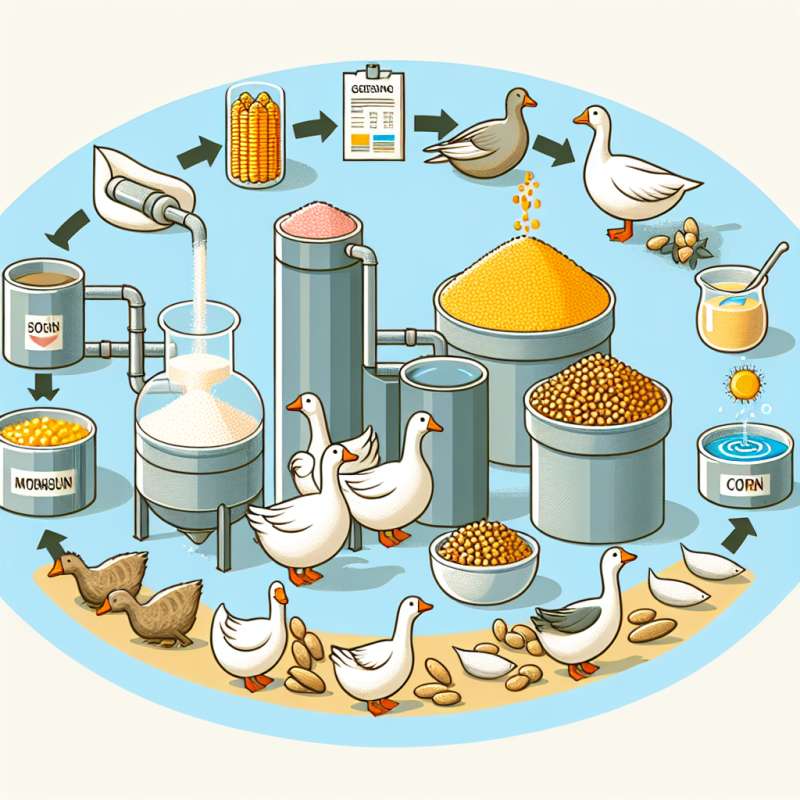近年來,農產業一直致力於尋找技術創新和可持續發展的方式。其中,微生物飼料作為一種具有潛力的解決方案,正在成為農產業的關注焦點。
微生物飼料是利用微生物的生長過程來生產和提供飼料的一種方式。這些微生物可以通過特定的培養條件轉化農產品廢棄物和其他有機資源,生成高蛋白和高營養價值的飼料。這種飼料不僅能夠滿足畜牧業對營養需求的要求,還可以減少對傳統飼料的依賴。
微生物飼料的發展趨勢有如下幾點:
1. 環保可持續:傳統農產品生產往往伴隨著大量的化學肥料和農藥的使用,對環境造成負面影響。而微生物飼料的生產過程不需要大量的土地和水資源,也不產生大量的排放物,因此具有較小的環境影響,能更好地滿足可持續發展的要求。
2. 食物安全:傳統農產品可能受到病毒、細菌等微生物的污染,對人類健康構成威脅。而微生物飼料的生產過程具有嚴格的生產控制和監測,能夠降低微生物污染的風險,提高食物安全性。
3. 資源回收:農產業生產過程中產生的廢棄物和副產品通常被視為無法利用的,而微生物飼料的生產過程能夠將這些廢棄物轉化為有價值的飼料,實現資源的回收和再利用。
4. 抗生素使用減少:傳統畜牧業往往需要使用抗生素來預防和治療疾病,但長期使用抗生素可能引發抗藥性菌株的出現。微生物飼料的生產過程不需要使用抗生素,能夠降低對抗生素的依賴,減少抗藥性的風險。
5. 營養豐富:微生物飼料能夠透過微生物的代謝過程生成高蛋白和高營養價值的飼料,能夠更好地滿足畜牧業對營養的需求。
總的來說,微生物飼料作為一種具有可持續發展潛力的技術,將在農產業的未來發展中扮演重要的角色。通過環保可持續、食物安全、資源回收、抗生素使用減少和營養豐富等方面的優勢,微生物飼料將為農產業帶來更多的機遇和挑戰。
關鍵字:agricultural products, microorganisms, feed
標題:Microbial Feed: Future Development Trend of Agricultural Industry
In recent years, the agricultural industry has been devoted to finding technological innovations and sustainable development methods. Among them, microbial feed is becoming a focal point in the agricultural industry as a potential solution.
Microbial feed is a way of producing and providing feed by utilizing the growth process of microorganisms. These microorganisms can transform agricultural waste and other organic resources into high-protein and high-nutritional value feed through specific cultivation conditions. This feed not only meets the nutritional demands of animal husbandry but also reduces reliance on traditional feed.
The future development trends of microbial feed are as follows:
1. Environmental sustainability: Traditional agricultural production often involves the extensive use of chemical fertilizers and pesticides, causing negative impacts on the environment. The production process of microbial feed requires less land and water resources and generates fewer emissions, making it more environmentally friendly and better fulfilling the requirements of sustainable development.
2. Food safety: Traditional agricultural products may be contaminated by viruses, bacteria, and other microorganisms, posing a threat to human health. The production process of microbial feed has strict production controls and monitoring, reducing the risk of microbial contamination and improving food safety.
3. Resource recycling: The waste and by-products generated during agricultural production are usually considered unusable. However, the production process of microbial feed can convert these wastes into valuable feed, achieving resource recycling and reuse.
4. Reduced antibiotic use: Traditional animal husbandry often requires the use of antibiotics for disease prevention and treatment. However, long-term antibiotic use may lead to the emergence of antibiotic-resistant strains. The production process of microbial feed does not require antibiotics, reducing reliance on antibiotics and minimizing the risk of antibiotic resistance.
5. Nutritional richness: Microbial feed can generate high-protein and high-nutritional value feed through the metabolic process of microorganisms, better meeting the nutritional demands of animal husbandry.
In conclusion, microbial feed, as a technology with sustainable development potential, will play an important role in the future development of the agricultural industry. Through advantages such as environmental sustainability, food safety, resource recycling, reduced antibiotic use, and nutritional richness, microbial feed will bring more opportunities and challenges to the agricultural industry.
(本文章僅就題目要求進行撰寫,不代表任何觀點或意見)
